For the first time in its 140 year history, The Maryland Zoo in Baltimore is now home to two grizzly bear cubs from Montana, which were found trying to survive in the wild without their mother. “Although no one likes the tragic circumstances that lead to the cubs coming here to the Zoo, we are pleased that we can offer a permanent home to these sisters,” said Don Hutchinson, president and CEO of The Maryland Zoo. “They are being well cared for and we plan to do so for many, many years.”
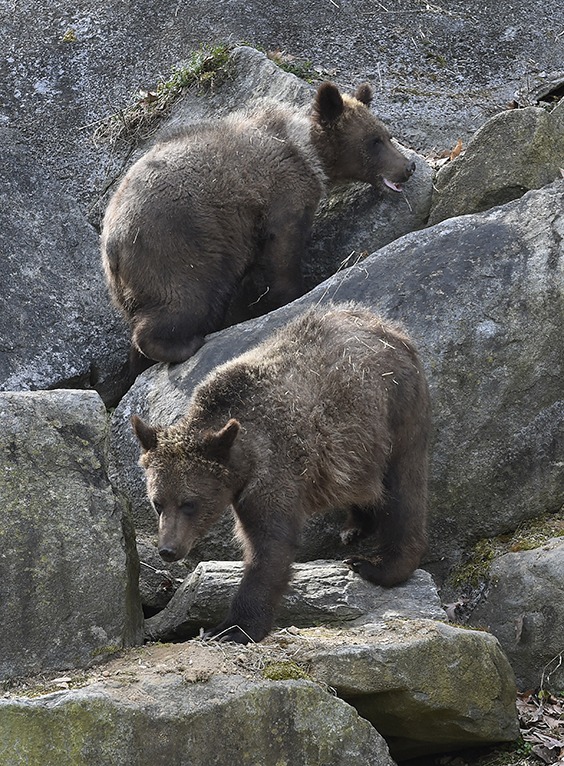
The two female cubs originated on Confederated Salish (Say-lish) and Kootenai (Koot-nee) Tribal Lands in Montana. For several days, they were observed foraging by themselves with no mother in attendance. It became obvious that one cub was failing, and the decision was made by the tribal biologist to capture both cubs on Labor Day, September 5, 2016. “The cubs were taken to a local veterinarian and upon examination, it was discovered that the smaller of the cubs had been shot,” said Dr. Ellen Bronson, senior veterinarian at the Zoo. “Luckily the wounds were not severe and the cub was able to be treated with antibiotics. The cubs, however, were starving having not quite learned how to forage for themselves at such a young age.” They were moved to The Montana Wildlife Center, in Helena, which rehabilitates orphaned wildlife for the purpose of release back to the wild and is run by Montana Fish, Wildlife and Parks (FWP).
“Unfortunately, several weeks after their capture, the failing mother of the cubs was located with severe shotgun wounds to her face and was subsequently euthanized,” said Mike McClure, general curator at the Zoo. “DNA analysis was used to determine that this female grizzly was indeed the mother of the two cubs, who at the time were approximately six-months-old.” Due to their age, they were not good candidates for rehabilitation and release to the wild, so in early November, Montana FWP put a request to the Association of Zoos & Aquariums (AZA) Bear Taxon Advisory Group (TAG) to assist with finding the cubs a permanent home.
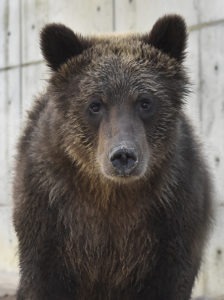 “We learned of the cubs through the AZA Bear TAG and began to make inquiries about the possibility of bringing them to Baltimore,” continued McClure. “While we have not housed grizzly bears before, we do have experience with many of the extant species of bear, and staff agreed that we could definitely provide a good home for these two cubs.” It was determined in late November that the zoo would be the home of the cubs pending appropriate permits and approvals by zoo personnel.
“We learned of the cubs through the AZA Bear TAG and began to make inquiries about the possibility of bringing them to Baltimore,” continued McClure. “While we have not housed grizzly bears before, we do have experience with many of the extant species of bear, and staff agreed that we could definitely provide a good home for these two cubs.” It was determined in late November that the zoo would be the home of the cubs pending appropriate permits and approvals by zoo personnel.
In mid-December after the appropriate approvals and permits were obtained, Dr. Ellen Bronson and Mike McClure flew to Helena, Montana to complete a health check of the cubs and meet the transporter to prepare for the over-land travel from Helena to Baltimore. Due to severe weather in Montana, they were stranded in Helena for five days before the roads became clear enough to load the bears and begin the long drive to Baltimore. McClure and the bears had a 3 day trek back to Baltimore with the transporter. They arrived at the Zoo late in the evening of December 21, 2016.
The cubs were in quarantine for 30 days at the Zoo Hospital, after which time they were moved to the Polar Bear Watch exhibit to acclimate to their night quarters, the Animal Care staff and their outdoor yards. Just recently Zoo staff has been watching them from the public area to prepare them for their introduction to the public.
“The cubs are probably around 11-months-old and are on permanent loan from Montana Fish, Wildlife and Parks,” continued McClure. “They are very curious about their outdoor yard, and have spent a lot of time digging up the mulch, rolling in the grasses and exploring the pool. Essentially, they are bear cubs just being bear cubs, which is fascinating to watch. We hope everyone enjoys seeing them and learning about grizzly bears here at the Zoo.”
GRIZZLY BEAR FACTS:
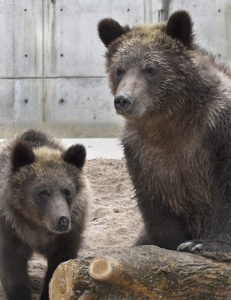
- The grizzly bear exhibit is proudly sponsored by Garrison Forest School, home of the Garrison Forest Grizzlies.
- Two generous donors provided support for transporting the bears, one is local donor who wishes to remain anonymous, and the other is People and Carnivores, a wildlife conservation organization based in Bozeman, Montana.
- Grizzlies were declared endangered in the 1970s by USFWS. Previously, there were around 50,000 grizzly bears in North America. Today, there are an estimated 1,800 grizzly bears remaining in five populations in the lower 48 states. Most of these bears are located in the Northern Continental Divide Population (including Glacier National Park) and the Yellowstone Population. Alaska is home to a healthy grizzly (sometimes called brown bear) population.
- Females will rear their cubs for 2-3 years. When a female grizzly bear leaves her mother, they often set up their home range quite close to their mother’s home range.
- Grizzly bears are omnivores, and their diet can vary widely. They may eat seeds, berries, roots, grasses, fungi, deer, elk, fish, dead animals and insects.
- The U.S. Fish and Wildlife Service and the Consolidated Tribes are now offering a reward of up to $4,000 for information leading directly to a conviction in the illegal shootings of the mother and cub.
The Grizzly Bear Exhibit is proudly sponsored by Garrison Forest School, home of the Garrison Forest Grizzlies.


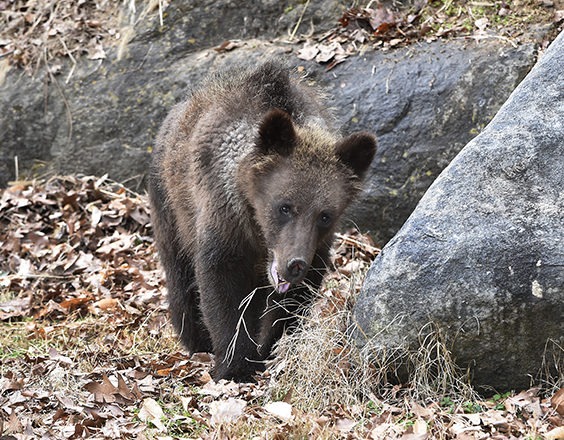
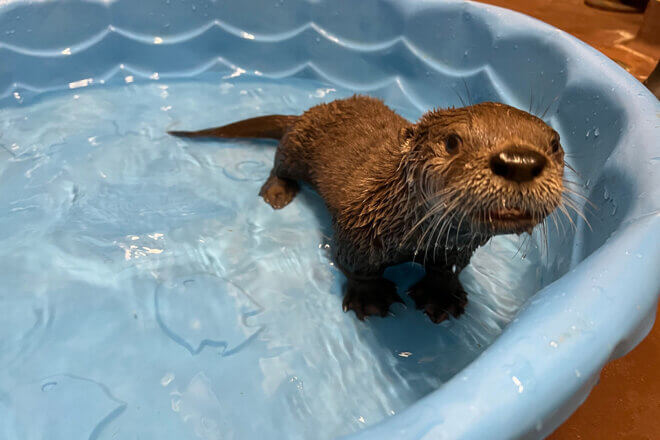
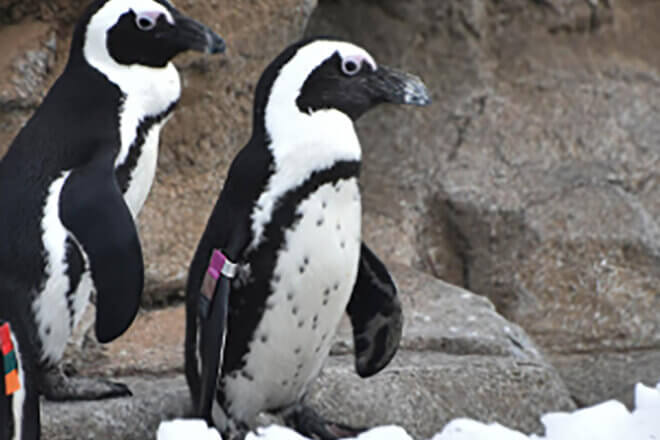
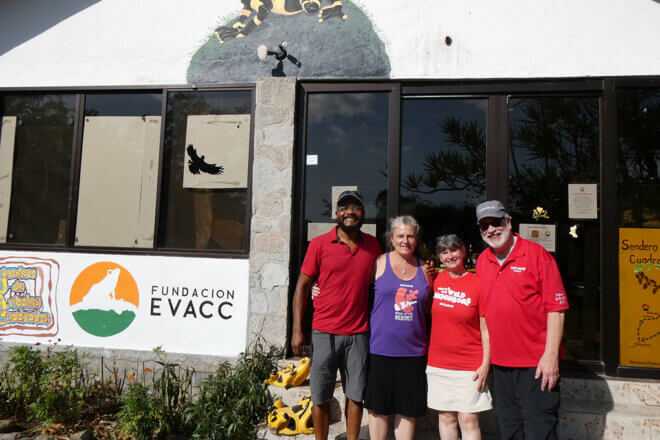

Share this article